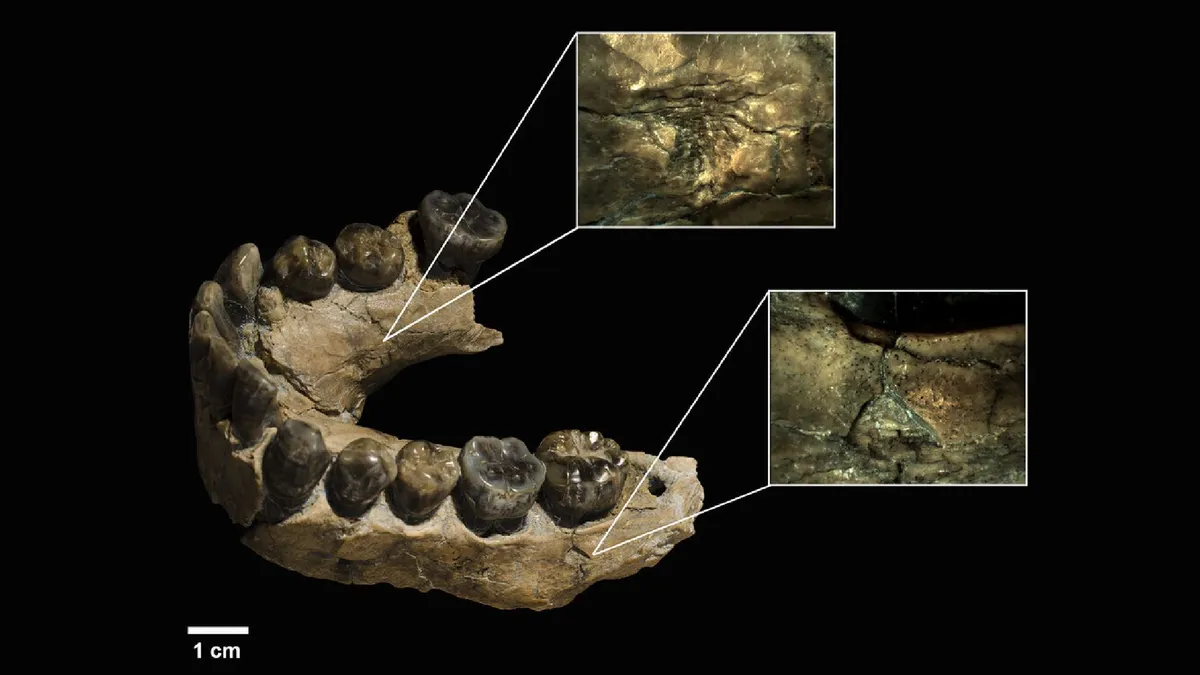
Almost 2 million years ago, leopards were likely hunting and feasting on our human ancestors in East Africa, according to a groundbreaking new study. This research, which utilized advanced artificial intelligence (AI) analysis tools, sheds light on the demise of two prehistoric individuals from the archaic human species Homo habilis, recognized as one of the earliest members of the Homo genus. Prior studies have suggested that H. habilis was occasionally preyed upon by large carnivores, such as big cats and crocodiles, evidenced by tooth marks found on various specimens. However, establishing a direct link between predation events and specific species has been challenging with traditional methods like physical examination.
The advent of AI has revolutionized our understanding of these ancient predation events. A study published on September 16 in the Annals of the New York Academy of Sciences documents, with unprecedented reliability, the carnivorous species responsible for the predation of unfortunate H. habilis individuals. "AI has opened new doors of understanding," said study co-author Manuel Domínguez-Rodrigo, a professor of prehistory at the University of Alcalá in Spain and a visiting professor of anthropology at Rice University in Texas.
In this innovative study, Domínguez-Rodrigo and his team analyzed two significant H. habilis specimens: a juvenile known as OH 7 and an adult referred to as OH 65. These specimens were dated to approximately 1.85 million years ago and 1.8 million years ago, respectively, and both were unearthed decades ago at the Olduvai Gorge site in Tanzania. "We chose these two fossils because they are clearly identified as H. habilis and are likely the best-preserved specimens," Domínguez-Rodrigo explained in a communication with Live Science.
The research team conducted an initial examination of the OH 7 and OH 65 specimens, identifying carnivore tooth marks on the upper jaw of the adult and the lower jaw of the juvenile that had not been documented previously. Subsequently, they employed AI tools to analyze these tooth marks. By utilizing computer vision—an AI technique for recognizing items through images—the researchers trained deep learning models on a plethora of bone markings created by modern carnivores, including hyenas, crocodiles, and leopards. In blind tests, the most accurate models achieved over 90% accuracy in identifying the source of the marks, according to Domínguez-Rodrigo.
Applying this sophisticated AI analysis to the remains of OH 7 and OH 65 revealed, with a high degree of confidence, that the bite marks were made by leopards. The study concluded that these H. habilis individuals were most likely preyed upon and consumed by leopards rather than merely attacked or bitten. Several pieces of supporting evidence bolster this conclusion. The survival of only a few skeletal fragments indicates a significant degree of ravaging, Domínguez-Rodrigo noted. If another carnivore had accessed the H. habilis remains before the leopards, the latter would have shown little interest, as they are strict flesh-eaters.
Domínguez-Rodrigo further elaborated that to reach the inside of the mandible of OH 7 and break the mandibular corpus—as the leopard did—a substantial amount of flesh and tongue would have needed to be removed first. This finding strongly indicates that the interaction was one of consumption rather than just a fatal bite.
This study underscores the importance of innovative technology like AI in enhancing our understanding of prehistoric human life and their interactions with predators. The findings not only provide clarity on the predation patterns of leopards but also contribute significantly to the broader narrative of human evolution and survival in a world filled with formidable carnivores.